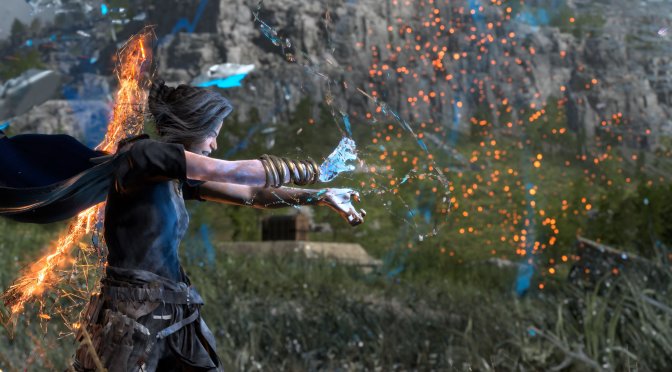Square Enix and AMD have just released a new update for Forspoken that adds support for AMD FSR 3.0. As such, we’ve decided to benchmark it and share our initial impressions of AMD’s answer to NVIDIA’s DLSS Frame Generation tech.
For our Forspoken FSR 3.0 benchmarks, we used an AMD Ryzen 9 7950X3D, 32GB of DDR5 at 6000Mhz, and NVIDIA’s RTX 4090. We also used Windows 10 64-bit and the GeForce 537.13 driver. Moreover, we’ve disabled the second CCD on our 7950X3D.
Let’s start with the good news. FSR 3.0 Frame Generation works. As we’ll discuss later, there are some issues but the fact that it actually works is a great start for the red team.
At Native 4K with Max Settings and Ray Tracing, the NVIDIA RTX4090 was able to push a minimum of 53fps and an average of 72fps. DLSS 2 Quality was faster than FSR 3.0 Quality, but FSR 3.0 Frame Generation brought a significant performance boost.
Unfortunately, AMD FSR 3.0 is unable to compete with the image quality of NVIDIA DLSS 2. There are shimmering issues all over the place (especially in fences), and the image looks more aliased. This has nothing to do with FSR 3.0 Frame Generation. Right now, we’re talking about the upscaling capabilities of FSR 3.0. To its credit, AMD has provided a Native AA setting for FSR 3.0. Even when using that setting, though, there are still some visual artifacts. For instance, there are shimmering/flickering issues with the game’s Bokeh Depth of Field Effect when using AMD FSR 3.0 (that are absent from both Native 4K and DLSS 2).
So, at first glance, it appears that DLSS 2 Quality is the best way to go. However, the game has areas that are more taxing than the ones featured in the benchmark tool. In those areas, the NVIDIA RTX4090 is unable to maintain 60fps at 4K, even with DLSS 2 Quality. So, from a performance perspective, FSR 3.0 Frame Generation is the way to go, especially if you target 4K resolutions.
What’s also crucial to note is that we did not experience any major latency issues when using FSR 3.0 Frame Generation. Even with a 60fps baseline, the mouse movement was pretty good. Forspoken is a third-person game and does not require fast/precise movements. As such, FSR 3.0 Frame Generation appears to be working great here. I’d really love to see FSR 3.0 Frame Generation in a racing game as that’s one genre in which I immediately felt the extra latency of DLSS 3 Frame Generation. Nevertheless, this is a good start for AMD and FSR 3.0.
Unfortunately, this isn’t a perfect launch though. Right now, FSR 3.0 Frame Generation suffers from major frame pacing issues on both NVIDIA’s and AMD’s hardware. Not only that but we experienced major tearing issues on our G-Sync monitor. Due to these tearing issues, mouse movement never felt smooth. Furthermore, there are major stuttering and performance issues when using the in-game V-Sync option. So yeah, AMD needs to fix these FSR 3.0 Frame Generation issues as soon as possible.
AMD plans to also add support for FSR 3.0 in Immortals of Aveum later today. Naturally, we’ll be sure to benchmark that title too, and share our impressions. In that game, we’ll be also able to compare FSR 3.0 Frame Generation with DLSS 3 Frame Generation.
Stay tuned for more!

John is the founder and Editor in Chief at DSOGaming. He is a PC gaming fan and highly supports the modding and indie communities. Before creating DSOGaming, John worked on numerous gaming websites. While he is a die-hard PC gamer, his gaming roots can be found on consoles. John loved – and still does – the 16-bit consoles, and considers SNES to be one of the best consoles. Still, the PC platform won him over consoles. That was mainly due to 3DFX and its iconic dedicated 3D accelerator graphics card, Voodoo 2. John has also written a higher degree thesis on the “The Evolution of PC graphics cards.”
Contact: Email


